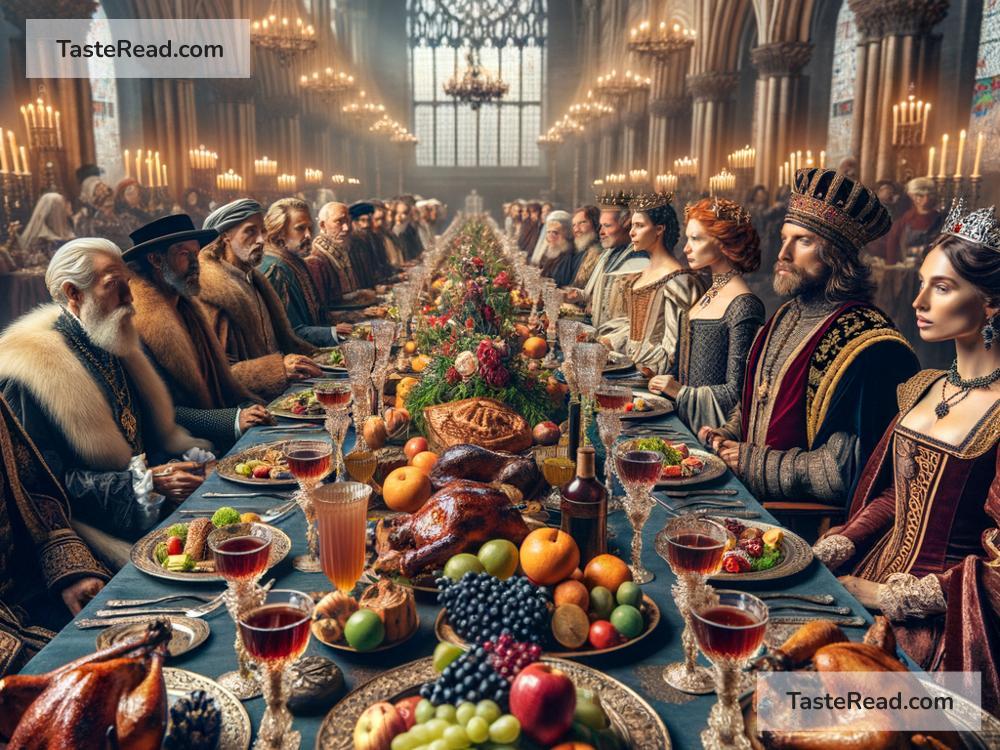How Food Reflects Power Dynamics in Game of Thrones
Food is more than just something people eat in Game of Thrones. It’s a storytelling tool that shows power, class, trust, betrayal, and even survival. Throughout the show and the books, food plays a symbolic role in understanding the relationships between characters and the dynamics of power in this brutal, unpredictable world. Let’s break down how food reflects power dynamics in Game of Thrones.
Feasts: A Display of Power
In Game of Thrones, the grand feasts held by kings and lords are often a display of their wealth and authority. For example, King Robert Baratheon’s feast at Winterfell in the very first episode sets the tone for how the powerful treat food. Tables overflow with roasted meats, bread, fruits, and wine, showcasing the abundance that comes with power. For King Robert, the feast isn’t just about eating—it’s about reminding everyone that he controls the Seven Kingdoms and their resources.
Compare this to the meals in the North, especially under House Stark. While still wealthy, the Starks’ food is simpler and reflects their values of humility and practicality. Roasted meats, hearty stews, and black bread showcase their connection to the cold, harsh environment they call home.
This contrast in feast styles reflects the personalities and governing styles of the rulers. Southern rulers like Robert and Cersei flaunt their excess to assert dominance, while northerners like the Starks focus on survival and practicality, signaling their down-to-earth leadership.
Starvation: A Tool for Oppression
Food scarcity in Game of Thrones is often used to highlight oppression and the suffering of the powerless. The poor, especially in King’s Landing, struggle to find bread while the wealthy enjoy lavish banquets. During wartime, we see scenes of villages destroyed, fields burned, and people starving—actions deliberately taken to weaken opposing forces.
One example is the siege of Riverrun in Season 6, where the assembled army cuts off food supplies to force the castle’s inhabitants into surrendering. This tactic shows how powerful groups use hunger as a weapon. In Westeros, controlling food often equals controlling people. When access to food is limited, the weak suffer while the strong gain leverage.
Conversely, when Daenerys frees slaves in places like Meereen, she ensures that food distribution is fair—a stark contrast to how others in power hoard food. Her actions represent her desire to rule differently, using food as a way to empower rather than oppress.
The Red Wedding: Food as a Trap
One of the most famous moments in Game of Thrones is the Red Wedding, a chilling example of how food can signal trust—but also betrayal. At its core, the Red Wedding was supposed to be a celebration: the union of House Stark and House Frey through marriage. Guests ate and drank freely, believing they were safe under the sacred tradition of guest right. In Westeros, guest right is an ancient custom that guarantees protection for anyone who eats under a host’s roof.
But Walder Frey’s betrayal shatters this trust. The feast becomes a trap, and the food that should symbolize hospitality turns into a backdrop for bloodshed. This horrific event demonstrates the political ruthlessness of the Freys and the Lannisters, who see traditional customs as tools that can be manipulated for their own gain.
The Red Wedding highlights how those in power, like the Freys and Lannisters, use food and hospitality not as symbols of kindness but as weapons in their political games.
Small Acts of Food Sharing: Humanity and Hope
Amid the chaos and bloodshed, food is also used to show moments of humanity. For example, when Arya Stark shares bread with Sandor Clegane (the Hound), it highlights a small, vulnerable connection between two people who are otherwise hardened by the brutality around them. Similarly, when Jon Snow shares food with the wildlings, it symbolizes the steps toward understanding and unity between two very different groups.
These small acts of sharing food are reminders that power doesn’t always have to be oppressive—sometimes, it can be kind and compassionate. This contrast helps viewers see the broader emotional landscape of the story, where survival often requires alliances and mutual respect.
Poison: Food as a Weapon
Food and drink are frequently used as literal weapons in Game of Thrones. Poison is a silent yet deadly way of removing enemies, and it highlights the cunning nature of the game itself. The most infamous example is when Olenna Tyrell orchestrates the poisoning of King Joffrey during his wedding feast by tampering with his wine. While the feast was supposed to signify Joffrey’s power, his death turns the power dynamic on its head.
Poison is a clever weapon because it allows those who might not have armies or swords to exert control. Olenna’s act shows that power in Westeros isn’t just about brute strength—it’s also about intelligence and subtlety. Food, in this case, becomes a deadly tool to shift the balance of power.
Conclusion
In Game of Thrones, food is far more than just a necessity for survival. It’s a reflection of power—who has it, who wants it, and how it’s used to control others. Feasts show off wealth and authority, starvation reminds us of oppression, betrayal turns meals into traps, and poison turns food into weapons. From the halls of Winterfell to the streets of King’s Landing, food remains a powerful symbol in the battle for the Iron Throne.
Ultimately, Game of Thrones teaches us that in the game of power, even something as simple as a loaf of bread or a cup of wine can have a deeper meaning. Whether it’s shared in kindness, hoarded for control, or used to kill, food tells us a lot about who holds power—and what they’re willing to do to keep it.


